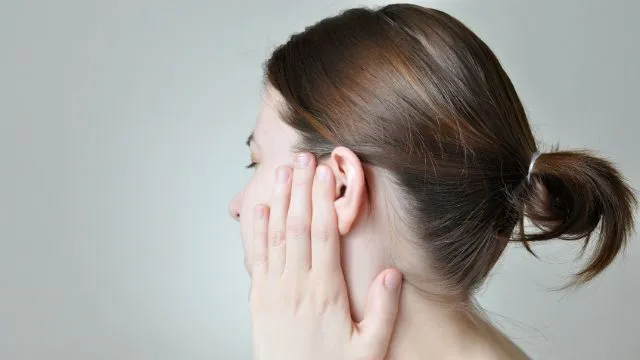
- Share on Facebook74
- Share on Pinterest
- Share on Twitter
It’s sticky, it’s yellowish, it’s not a hot conversation topic, but we all have it and deal with it: ear wax. Ear wax performs several essential functions, including protecting the ears from the entrance of dirt and bacteria and keeping them lubricated. However, when it builds up, it can get both uncomfortable and unsightly.
Many people deal with excess ear wax by breaking out the cotton swabs. Though tempting, this is not the best idea, as it can actually do more harm than good. Cotton swabbing can push wax deeper into your ear, and if your hand slips, you run the risk of puncturing your eardrum. This can have very serious consequences, including hearing loss.
A large percentage of ear wax, also known as cerumen, is fat, and this works to both trap dust and other particles that would otherwise enter the ears, and to moisturize the ear canal. It is also antibacterial in nature, which helps to keep pathogens at bay. Too little ear wax can actually make your ears feel itchy and irritated, and increase your chances of developing a painful ear infection.
Ear wax is produced on a constant basis with the help of apocrine glands within the ear. These glands are also involved in sweat production. Through the natural movement of the jaw, ear wax slowly trickles towards the outside of the ear, moving debris along with it out of the ear canal.
Because of this natural motion, all that most people need to do to keep their ears clean is a quick wipe with a wet washcloth, followed by some warm, running water in the shower. However, some people produce more ear wax than others, and experience wax buildup. Not only can this lead to the ears feeling stuffed up, it can also cause pain, ringing, itching, wax discharge, coughing, funky ear smells and compromised hearing.
According to health expert Dr. Joseph Mercola, a tendency to experience ear wax buildup may be a sign of a deficiency in omega-3 fatty acids. Adding fatty fish such as wild-caught salmon and sardines, as well as flax seeds and avocados, into your diet may help prevent this from happening.
One natural method that some people try to break up ear wax is ear candling. However, this method may be counterproductive, as it can lead to further blockages. In some cases, people have gotten burned by dripping wax, which can be very serious if the wax drips into your ears. Therefore, we do not recommend this method.
The following are our top three home remedy suggestions for dealing with ear wax safely and naturally.
Sea salt and water
Add just over a teaspoon of sea salt to about ¾ of a cup of warm, filtered water. Lay on your side, and add several drops of the mixture into one ear, using either an eyedropper or a washcloth, letting the solution flow into your ear (don’t use too much). Then, lay that side of your head onto a pillow and let the salty water drain out. Repeat on the other side.
Coconut oil or olive oil
Either of these oils can help to soften ear wax, easing its ability to make its way out of your ears. Choose either organic, extra virgin coconut oil, or organic, extra virgin olive oil, and simply squeeze two drops into the ear (or ears, if both are affected) with an eyedropper before you go to bed each night for up to five days.
Hydrogen peroxide solution
You can try this method on its own, or after a few days of using coconut or olive oil, if the blockage is significant. Simply combine ½ cup of warm, filtered water with ½ cup hydrogen peroxide, of a concentration under three percent. Lay on your side and squeeze three or four drops into your ear, letting it enter your ear, then switch sides and let the mixture drain out. Repeat on the other side.
 If you have tried these methods and are still not experiencing relief, it may be time to visit a health professional for a high-pressure irrigation. Individuals who have medical ear issues (such as tubes), diabetes or weakened immune systems, however, should not have an irrigation, and should speak to their health professional of choice about other options.
If you have tried these methods and are still not experiencing relief, it may be time to visit a health professional for a high-pressure irrigation. Individuals who have medical ear issues (such as tubes), diabetes or weakened immune systems, however, should not have an irrigation, and should speak to their health professional of choice about other options.
-The Alternative Daily
- Share on Facebook74
- Share on Pinterest
- Share on Twitter

